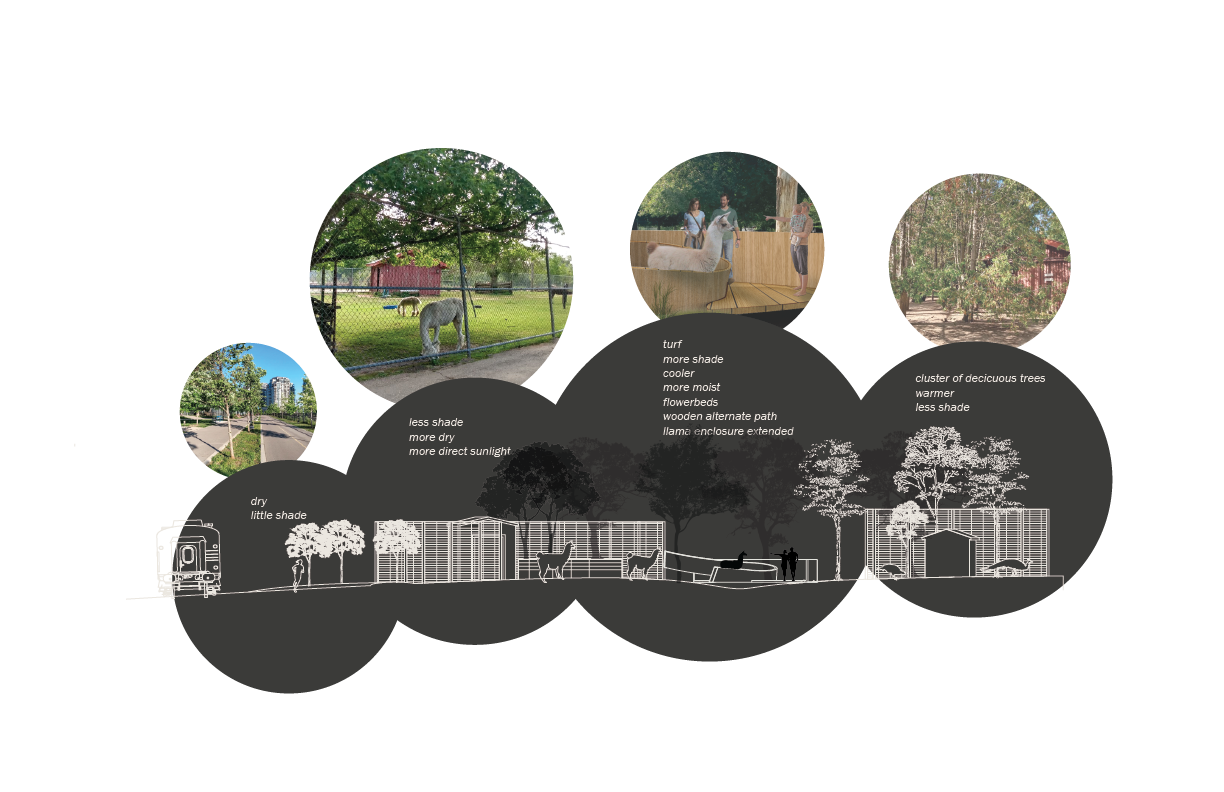Reciprocity with our long-necked camelid friends.
Micro-pavilion / Supervised by Karen May / ARCH293
Eby Farmstead, Waterloo Park / Waterloo, ON
Based much on Enlightenment epistemology, the mind-body distinction permeates how we consider ecology today. We are “mind”, human, atemporal, while the material resides in our sphere of perception. William Blake’s “deep ecology” posits, instead, the natural as having a reciprocal, immersive relationship with people. Inspired by Tadashi Kawamata’s concept of legitimizing architecture through juxtaposition, this micro-intervention on Waterloo Park’s llama enclosure gives them a chance to hold greater ground in a parkscape that should be theirs, too.
Drawings above show the intervention in its site-context. It serves as a small extension to the llama enclosure, mitigating a migratory space near a path junction. Diagrams below show data on the respective agency of human and animal through various lens.









